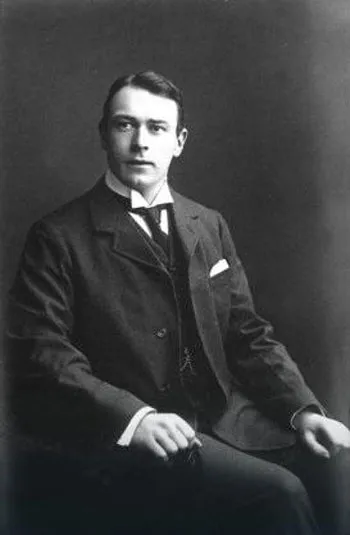The Chief Designer of the ‘Titanic’ Saved Everyone He Could as His Ship Went Down
Thomas Andrews had argued for more lifeboats on the ship, but he was rebuffed on the grounds that it would ruin the view
/https://tf-cmsv2-smithsonianmag-media.s3.amazonaws.com/filer/ae/fc/aefc1fc2-e241-4a17-b73b-9ad6518427cb/stower_titanic.jpg)
Thomas Andrews was born on this day in 1873. He died in 1912, when the ship he had designed sank, after encouraging the Titanic’s passengers to get off the ship if they could.
Today the Titanic’s sinking is the poster-child for human hubris, but it’s also a cautionary tale about the need for emergency preparedness to be built into design. Andrews had argued for the ship having more lifeboats and for other safety measures, writes William Henry Flayhart III for Scientific American. His proposal would have resulted in there being enough lifeboats for everyone on the ship, he writes, but the president of the White Star Line, Bruce Ismay, “protested that they already had more than the legally required number of lifeboats (16) and the extra boats simply would clutter up the beautiful open expanse of the upper deck, where first-class passengers would want to stroll.”
The result: the Titanic infamously set sail with only enough lifeboat room for 1178 people out of the more than 2200 on board. Among that number were Thomas Andrews and a group of men who had worked on the ship at his naval design firm. This “guarantee group” was there to look for any issues with the ship and help iron out kinks, writes the BBC. “All lost their lives.”

When the ship struck an iceberg, it was Andrews who evaluated the damage it had caused and went to tell the captain, the BBC writes. One of the final telegrams sent by the ship described his actions, according to a different BBC article. After the accident, he looked at the damage and advised passengers to get into heavy clothing and prepare to leave the ship, it reads. Many people were skeptical that the “unsinkable” ship had been seriously damaged, it reads, but Andrews convinced them to leave. In the shortened telegram language, it confirms his attention: “When last seen, officers say was throwing deck chairs, other objects, to people in water. His chief concern safety of everyone but himself.”
A young survivor of the sinking confirmed in a memoir many years later that he remembered Andrews telling him and his parents that the ship would sink in an hour. “We could hardly believe it, and yet if he said so, it must be true,” he wrote. “No one was better qualified to know.” In the end, only just over 700 people survived the ship's sinking, writes Flayhart, and the lifeboats had been rowed away while not at capacity because people chose not to get in.
“A steward was the last person to see him,” writes the BBC. According to the Encyclopedia Titanica: “He was last seen staring into space by the painting in the first class smoking room, his lifebelt discarded.”